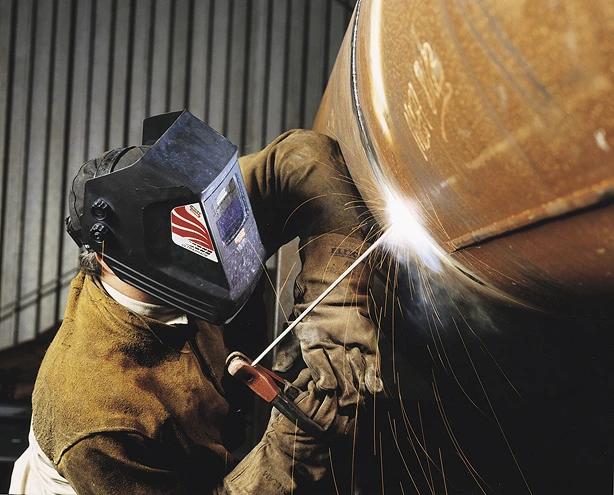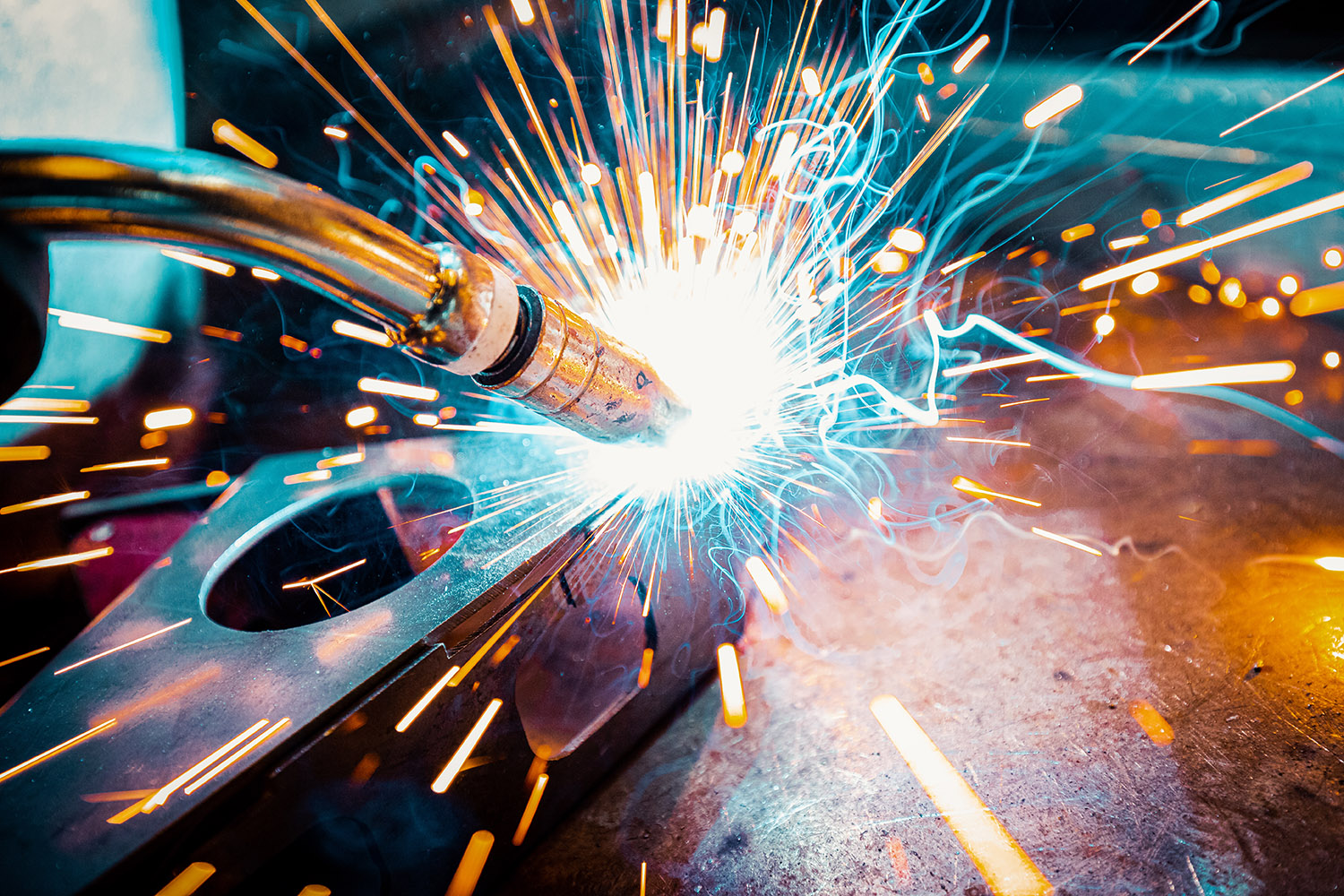Usual Welding Fixing Issues and How to Address Them Properly
Welding repairs often come across a variety of problems that can jeopardize the stability of the final item. Typical troubles consist of insufficient infiltration, porosity, and imbalance, amongst others. Each defect presents unique difficulties that call for specific techniques for resolution. Recognizing these concerns is vital for welders intending to improve their outcomes and skills. This conversation will certainly explore these common welding fixing concerns and efficient methods to address them.
Poor Infiltration
Inadequate penetration happens when the weld steel stops working to totally fuse with the base material, leading to weak joints and prospective architectural failures. This concern frequently originates from not enough warmth input, wrong electrode angle, or inappropriate welding speed. Welders may come across inadequate penetration due to a miscalculation of the required specifications for a details product density or type. Furthermore, contamination on the base material's surface area can prevent reliable bonding, worsening the problem. To deal with inadequate infiltration, welders must assure ideal setups on their tools and maintain a clean work surface. Routine examination of welds is advised to identify any type of deficiencies early, enabling for prompt modifications and the prevention of endangered structural honesty in bonded assemblies.
Porosity
Porosity is a common defect in bonded joints that manifests as small gas bubbles entraped within the weld steel. This defect can endanger the stability of the weld, causing lowered strength and potential failing under stress. Belgrade Fabrication. Porosity generally emerges from contamination, moisture, or inappropriate welding strategies, which allow gases to leave into the molten weld pool. To deal with porosity, welders need to guarantee appropriate surface preparation, keep a clean functioning setting, and make use of ideal welding specifications. In addition, selecting the best filler product and protecting gas can alleviate gas entrapment. Routine examination and testing of welds can assist determine porosity early, ensuring timely restorative activities are taken, thereby preserving the high quality and dependability of the bonded structure
Misalignment
Imbalance in welding can develop from various variables, including incorrect arrangement and thermal expansion. Comprehending the origin is essential for reliable resolution. Several modification methods are offered to straighten components and ensure structural integrity.
Sources of Imbalance
Welding misalignment commonly originates from a range of underlying problems that can endanger structural honesty. One main reason is inappropriate fit-up of parts before welding, which can result in gaps and irregular surface areas. Variants in thermal growth during the welding process can additionally cause distortion, specifically if the materials being joined have various coefficients of growth. In addition, insufficient clamping and fixturing might stop working to hold parts firmly in location, causing movement during welding. Badly maintained equipment, including welding machines and devices, might present inconsistencies in the weld bead, additional contributing to imbalance. Finally, driver error, stemming from not enough training or experience, can likewise play a considerable duty in creating misaligned welds.
Improvement Techniques Readily Available
Attending to imbalance successfully requires a combination of corrective techniques customized to the particular concerns at hand. One common technique is the use of components or jigs to hold parts in the correct placement during welding, guaranteeing constant positioning. In addition, preheating the products can help in reducing distortion and enhance fit-up. For considerable imbalance, mechanical adjustment strategies, such as using hydraulic jacks or clamps, can be used to remedy the position prior to welding. Post-weld warmth treatment may additionally be essential to eliminate anxieties brought on by imbalance. Lastly, mindful assessment and modification throughout the configuration stage can avoid misalignment problems from coming to be substantial troubles, advertising a smoother welding procedure and enhancing total structural integrity.
Distortion
Distortion is a common challenge in welding that can occur from numerous factors, consisting of unequal cooling and heating. Recognizing the reasons for distortion is necessary for applying reliable avoidance techniques. Addressing this concern not just improves architectural honesty but also boosts the overall high quality of the weld.
Causes of Distortion
When subjected to the intense heat of welding, products usually undertake adjustments that can lead to distortion. This sensation mainly develops from thermal expansion and contraction throughout the welding procedure. As the weld location warms up, the product increases; upon cooling, it acquires, which can produce inner tensions. Additionally, irregular heating throughout a work surface can aggravate these stresses, causing warping or bending. The type of material likewise plays a substantial function; metals with differing thermal conductivity and coefficients of growth may react in a different way, resulting in uncertain distortions. Additionally, bad joint layout and inadequate fixturing check here can contribute to misalignment during welding, raising the probability of distortion. Understanding these reasons is important for reliable welding repair and avoidance techniques.
Prevention Techniques
Effective avoidance strategies for distortion throughout welding focus on controlling warm input and making sure correct joint design. Keeping a consistent heat input helps to decrease thermal growth and tightening, which can bring about distortion. Using strategies such as pre-heating the workpiece can likewise decrease the temperature level slope, advertising uniform heating. In addition, choosing appropriate joint styles, such as T-joints or lap joints, can improve security and decrease anxiety focus. Executing proper fixturing to protect the work surfaces in position even more aids in keeping alignment throughout the welding procedure. Staggered welding sequences can distribute heat much more equally, preventing local distortion. By applying these strategies, welders can greatly lower the probability of distortion and enhance the total top quality of their welds.
Fracturing
Breaking is a typical issue encountered in welding repair work, typically arising from numerous variables such as incorrect air conditioning rates, product choice, or poor joint preparation. The occurrence of splits can greatly compromise the integrity of the weld, causing possible failures during operation. To address this issue, welders need to first evaluate the root triggers, ensuring that products are suitable and properly selected for the details application. Additionally, regulating the air conditioning rate during the welding process is necessary; quick cooling can cause stress and anxiety and result in cracking. Correct joint style and prep work likewise add to decreasing the danger. Carrying out these approaches can boost weld quality and sturdiness, inevitably reducing the probability of breaking in completed weldments.

Incomplete Blend
A considerable concern in welding repairs is incomplete fusion, which happens when the weld steel does not effectively bond with the base material or previous weld passes - Montana Mobile Welding and Repair. This issue can cause weak points in the joint, possibly compromising the integrity of the bonded framework. Variables adding to insufficient blend consist of insufficient warm input, inappropriate welding technique, and contamination of the surfaces being signed up with. To address this concern successfully, welders must assure proper pre-weld cleaning and surface preparation, in addition to change their welding specifications to attain ample infiltration and fusion. Regular evaluation during the welding procedure can additionally aid identify insufficient fusion early, permitting timely corrective steps to enhance the total high quality of the weld
Overheating
While welding repairs can boost structural integrity, overheating offers a substantial difficulty that can result in material destruction. Too much warmth during welding can modify the mechanical residential properties of metals, leading to reduced strength, increased brittleness, and bending. This phenomenon is particularly crucial in high-stress applications where structural integrity is vital. Identifying getting too hot can include visual evaluations for discoloration or distortion, along with monitoring temperature level during the welding procedure. To mitigate the risks related to overheating, welders need to employ appropriate techniques, such as regulating warm input, readjusting travel rate, and using suitable filler products. Furthermore, carrying out pre- and post-weld warm treatments can aid recover material residential properties and enhance the general quality of the repair service, guaranteeing lasting performance and safety and security.
Frequently Asked Questions
What Are the Typical Signs of a Welding Issue?

Just How Can I Test My Welds for High quality?
To examine welds for quality, one can utilize aesthetic examinations, ultrasonic testing, and radiographic methods. Each method guarantees structural integrity, determines problems, and verifies adherence to specified criteria, eventually enhancing the dependability of the bonded joints.
What Security Preventative Measures Should I Take While Welding?
When welding, one must prioritize security by putting on appropriate personal safety tools, making sure correct air flow, protecting flammable products away, keeping a clean office, and knowing environments to avoid injuries and crashes.
Can I Fix a Weld Without Redesigning the Entire Joint?
Fixing a weld without redesigning the whole joint is possible, depending on the damages (Belgrade Welding). Strategies such as grinding, including filler material, or utilizing a welding procedure can successfully deal with particular flaws while protecting the bordering framework
What Devices Are Vital for Reliable Welding Fixes?
Important tools for effective welding repair work consist of a welding equipment, cable brush, grinder, protective equipment, clamps, and filler products. Each tool plays an essential role in making sure high quality and safety and security throughout the repair procedure. Porosity generally emerges from contamination, dampness, or inappropriate welding methods, which permit gases to run away right into the liquified weld swimming pool. Badly maintained devices, including welding devices and devices, might introduce incongruities in the weld grain, additional adding to imbalance. When subjected to the intense warm of welding, materials usually undergo changes that can lead to distortion. Splitting is a typical issue experienced in welding fixings, usually resulting from numerous aspects such as improper cooling rates, product selection, or insufficient joint preparation. A considerable issue in welding fixings is insufficient fusion, which takes place when the weld metal does not adequately bond with the base product or previous weld passes.